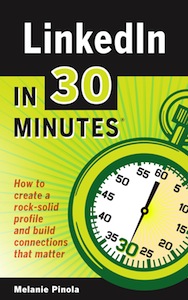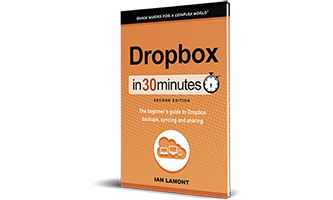A few years ago, I picked up Positioning: The Battle for Your Mind, by Al Ries (with Jack Trout). It’s a quick read, and an old book (it was written in the 1980s, and based on a series of articles for Advertising Age that date from the early ’70s) but it was recommended by Lean Startup practitioner Ash Maurya, author of Running Lean. When I began writing books, I used some of the ideas in Positioning to position Dropbox In 30 Minutes as well as a second guide that is like a Google Docs for Dummies alternative. But it wasn’t just the technical topics that appealed to people — I actually created a series of guidebooks that can be read in 30 minutes. I learned from customers that this “positioning” is very compelling. It’s worth digging into the concept to learn how it can be applied elsewhere, while keeping in mind that there are some limitations.
Summary of Positioning by Ries and Trout
Positioning starts with several compelling premises. First, we are constantly bombarded with marketing messages. “We have become the world’s first overcommunicated society,” Ries writes. “Each year, we send more and receive less.” As a result of the huge volume of marketing messages, advertising is like a “very light fog that envelops your prospects.” Note this was written long before the advent of the World Wide Web and mobile phones!Beyond the challenge of getting noticed, is the issue of convincing people to believe in the messaging. According to Ries, this is where many companies make a big mistake — trying to change audiences’ minds that their products are better than the market leaders.
“Were the average consumer rational instead of emotional, there would be no need for advertising,” Ries says. The reasoning here: Customers would gravitate toward better-quality products, regardless of who produced them or how they were marketed.
Of course, that’s not what happens — people tend to gravitate toward the familiar brands and products at the “top of the ladder” for each product category. And knocking the market leader off that ladder with claims about quality is nearly impossible.
Therefore, according to Ries, it makes sense to work with what customers already know. Strategy should be built from the perspective of the “prospect”, rather than the perspective of the company (and the ego of company executives). Often, this involves finding the hole that the market leaders have neglected or don’t serve well.
These are the concepts that lie at the heart of Ries’ and Trout’s thesis, and they use many case studies and examples to illustrate the companies, brands, and products that have successfully positioned themselves in the mind of the consumer. Consider these examples from decades past, and the holes that they filled:
- 7-Up: “Uncola”
- VW Bug: “Think Small”
In the first example, 7-Up was introduced to a market which associated “soda” with “cola”. It filled a hole for people who wanted something other than cola, which was at the top of the sweetened carbonated beverage ladder. The original VW Bug couldn’t compete with what drivers saw in the size and power of cars from Detroit, so its marketers sidestepped those issues and concentrated on the hole that Detroit had neglected — small vehicles, which have their own advantages in the minds of the prospect: price, parking, fuel use, etc.
Other marketing strategies in Positioning
There are other strategies Ries mentions in Positioning. One involves invoking other successful products. One clever example involved positioning Jamaica as “The Hawaii of the Caribbean.” It’s a great line, but it apparently fell victim to micromanagement at the highest levels of Jamaica’s government.
However, I had to question other parts of Positioning. For instance, Ries spent a lot of time discussing the importance of of having the right name. Some of this makes sense, such as the example he used of “Hog Island” being a poor choice for a tropical resort until it was renamed “Paradise Island.”
But should companies completely avoid “coined names” like Coca-Cola? I think the jury is still out on this one. Ries states that it’s “dangerous” to have “mean-nothing” names, and it only seems to work when the product is first-to-market, like Xerox. But in the digital age, we have seen a slew of successful companies and products that have obscure or semi-relevant names (Google and Google Docs, Apple and the iPod, Nintendo and the Wii, etc.) None were first-to-market in their respective categories, yet all have been runaway successes.
On the other hand, some people in the digital realm are still firm believers in using easy-to-remember and easy-to-spell names. At a conference a few years ago, I heard Mint cofounder Aaron Patzer talk about spending a lot of time on finding (and paying for) the right name. The personal finance tracking site had to be easy to understand, spell, and enter into a browser address bar. He also thought his competitors were crazy for choosing names that were hard to spell or pronounce — he specifically mentioned Geezeo.com and Wesabe.com.
Ries also struggles with disentangling positioning problems from other business problems. For instance, he suggests that Eastern Airlines was failing at the time of the book’s writing because of its name (“when prospects are given the choice, they are going to prefer the national airline”). No mention was made of deregulation, new competition, Eastern’s fleet, or the titanic management/labor struggles Eastern was dealing with at the time.
Positioning a big company vs. positioning a startup
It must be noted that the ideas in Positioning are often best suited to major national brands and multinational corporations. Startups may find some lessons here — I certainly derived value in the hole and ladder concepts described above. But other theory and examples will resonate best with people who work for Google, G&E, and other giants of the corporate world, in which big-budget advertising campaigns and months-long market research studies are possible. Ries is clear that it takes time and money to follow his advice (e.g., “If you don’t spend enough to get above the noise level, you allow the Procters & Gambles of this world to take your concept away from you”). Of course, time and money are two things that most startups don’t have.
Lastly, Positioning is a book from another era — the golden age of one-way mass media. It was written long before the Web, social networks, and mobility had a chance to impact the way people communicated and formed opinions. Technology-driven trends such as the Web or mobile phones as well as game-changers such as Google search results must be considered in any discussion about marketing, but these developments came too late for Positioning. On the other hand, it leaves a few holes that I am hoping other authors, bloggers, or experts will try to fill.




